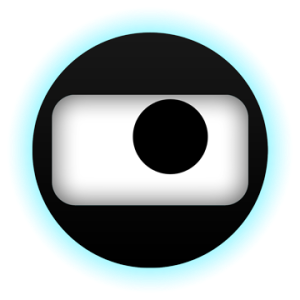My new game, loop, is almost here! Loop features an interesting mathematical concept called the “tesseract,” and today I wanted to share what that’s all about. It’s math, but certainly not the most technical post I’ve written on this blog.
A tesseract is simply a special name for a 4-dimensional cube. Just as when you take a square and “pull” it upward to produce a cube, you could “pull” a cube along an axis that we can’t see to produce a tesseract. But a problem arises when you try to visualize these shapes. When you look at a cube top-down, all you might see is a square, right? Similarly, if you were to look at a tesseract in the 3-D world, all you would see was a cube. There has to be some way to project the rest of the tesseract into the world we can see.
Carl Sagan has a great video explaining how to understand shapes in another dimension. Essentially the crux of the matter is that although you can’t see the tesseract in its full 4-dimensional glory, you can calculate what its “shadow” on the 3-dimensional world would look like.

As you can see, the tesseract looks like two nested, connected cubes. Why is one cube smaller than the other? Well, it appears smaller because the other end of the tesseract is far away on the axis we can’t see—just as an object farther away in a picture appears smaller. And in animations of a tesseract rotating, which you can see briefly in the preview video for loop, the cubes appear to change size with respect to each other as the “ends” of the tesseract move closer to and farther from the camera.
Of course, loop is a video game, not a math lesson—so the mathematical rules of the tesseract may be a bit warped as they make their way into the animations. After all, a tesseract is simply a cubelike shape, nothing more. But in the game, the tesseract is more than a geometric object; it is a vehicle for transportation across the levels. That idea was impressed upon me by Madeleine L’Engle’s classic 1963 novel A Wrinkle in Time, with which I have been fascinated since elementary school.

According to A Wrinkle in Time, the tesseract is actually a 5-dimensional entity that allows you to jump across the fourth dimension, which is often said to be time. Based on the conventional definition of a tesseract above, L’Engle seems to have been taking some liberties with the math—but of course, that’s the nature of science fiction.
Regardless of its factual blips, the notion of using another dimension to travel through space is inspiring. The tesseract in loop draws from that idea, which is especially appropriate since (spoiler alert) the Institute within the game exists in another dimension. As an analogy, think of a multistory building: at any given point, you only know the floor you’re on—the x-axis. But when you get on an elevator, that transports you across the y-axis, taking you to another floor. The tesseract is basically a multidimensional elevator.

Loop has two kinds of tesseracts—strictly speaking, 4-dimensional polytopes—that you’ll see in the various levels. One is the hypercube, which is mathematically classified as a tesseract. The other is a 16-cell, or hexadecachoron if you’re feeling pretentious; it’s like an octahedron translated into four dimensions. To read more about the different types of 4-D shapes (regular 4-polytopes), check out Wikipedia if you dare.
I find these multidimensional ideas really interesting! Let me know what you think in the comments.
